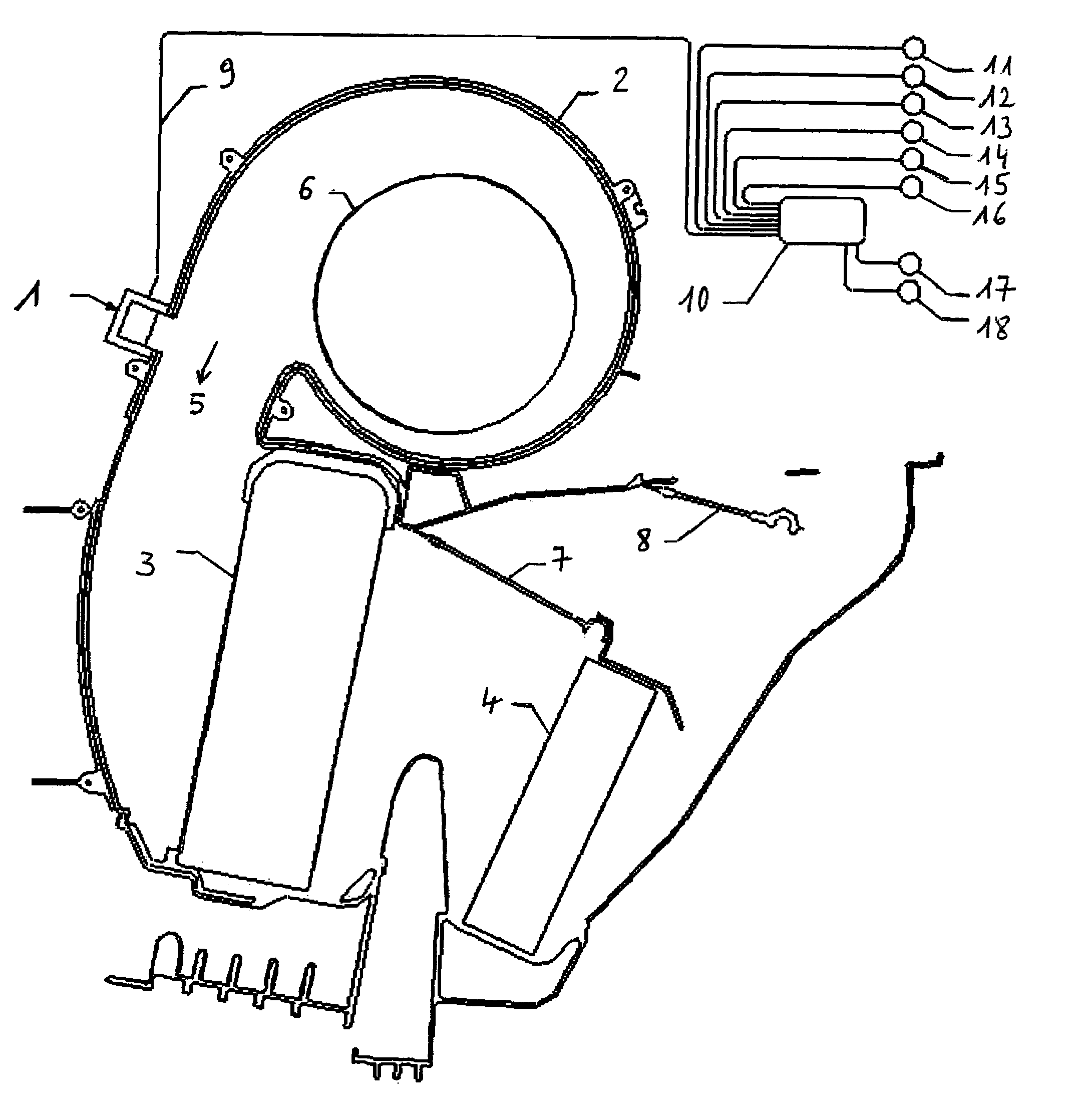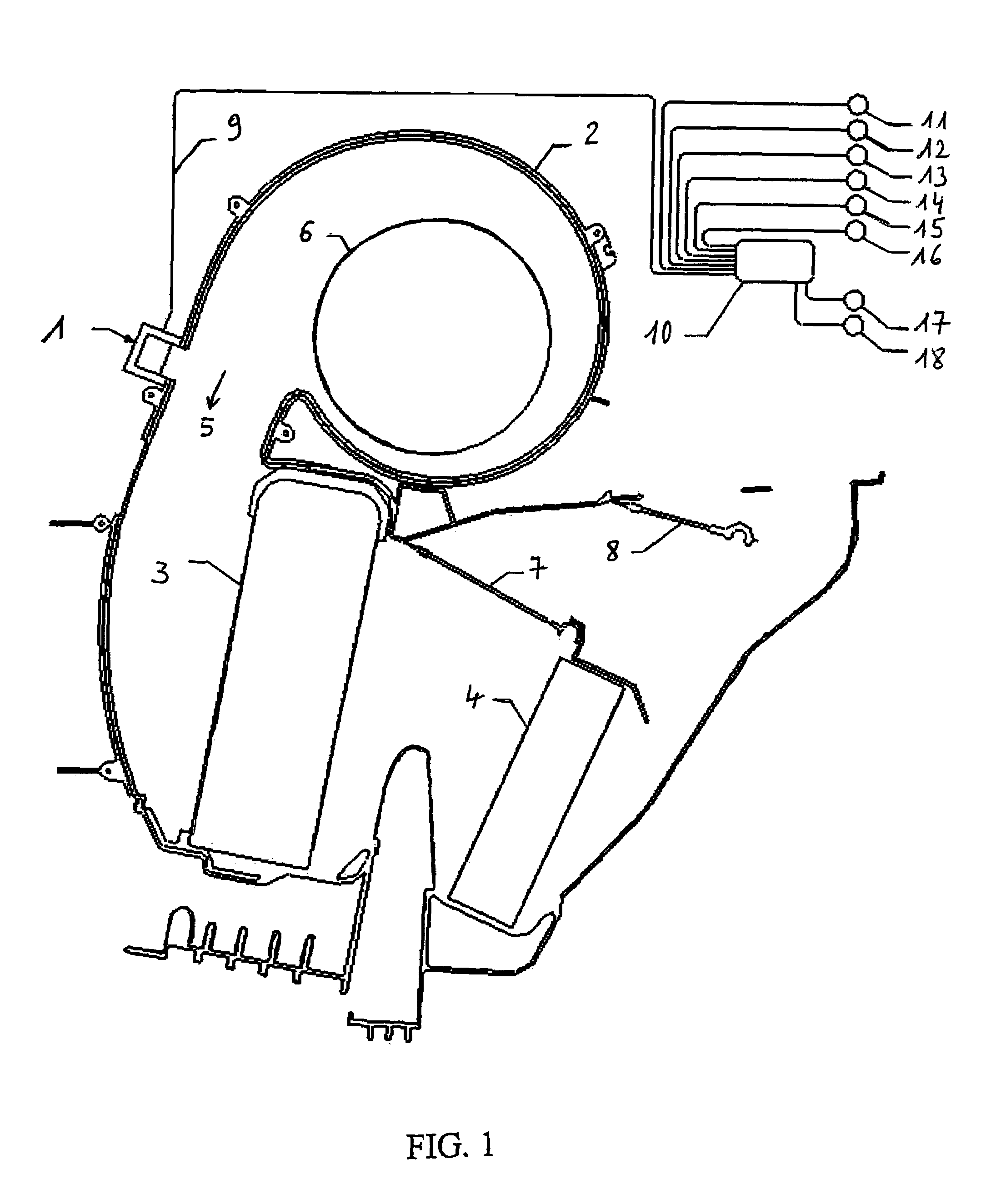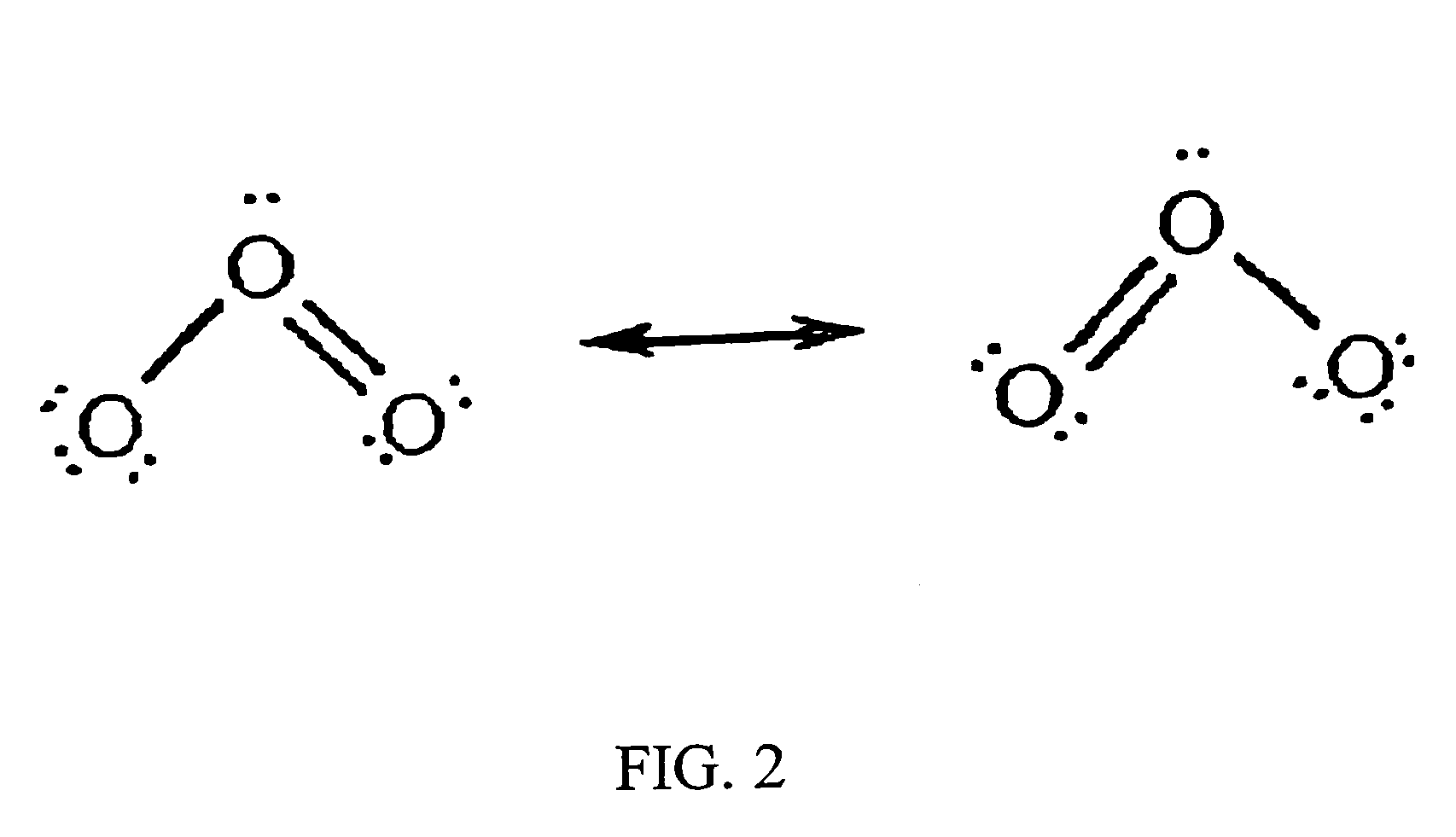Method and apparatus for decontamination for automotive HVAC systems
a technology for hvac systems and automotive, applied in vehicle heating/cooling devices, disassembly and maintenance, energy-based chemical/physical/physicochemical processes, etc., can solve the problems of significant impact on passenger comfort by microorganism growth, and achieve the effect of reducing the growth of microorganisms
- Summary
- Abstract
- Description
- Claims
- Application Information
AI Technical Summary
Benefits of technology
Problems solved by technology
Method used
Image
Examples
Embodiment Construction
[0044]While prior art describes the terms “efficient purification” or air purification, the present invention focuses on the distribution of the oxidant within the vehicle, the distribution problem to be solved. In one aspect of the present invention, the timing of the generator operation and ozone generator design provide the necessary controls to prevent “over ozonation”.
[0045]The molded materials, and, in particular, the plastic and plastic like materials from which an HVAC unit and ducts of the HVAC system are, preferably, made, cannot be sufficiently grounded for the interior surfaces to attract disinfection means such as ionized vapor to purport a solution. Water vapor, as a conductive medium, potentially causes electrical shorts to occur in several components of the HVAC unit, including the resistor and blower motor. Products like ammonia, that might disinfect the air conditioning system of a vehicle, carry their own objectionable odors of long duration, that would be offensi...
PUM
| Property | Measurement | Unit |
|---|---|---|
| cycle time | aaaaa | aaaaa |
| concentration | aaaaa | aaaaa |
| concentrations | aaaaa | aaaaa |
Abstract
Description
Claims
Application Information
 Login to View More
Login to View More - R&D
- Intellectual Property
- Life Sciences
- Materials
- Tech Scout
- Unparalleled Data Quality
- Higher Quality Content
- 60% Fewer Hallucinations
Browse by: Latest US Patents, China's latest patents, Technical Efficacy Thesaurus, Application Domain, Technology Topic, Popular Technical Reports.
© 2025 PatSnap. All rights reserved.Legal|Privacy policy|Modern Slavery Act Transparency Statement|Sitemap|About US| Contact US: help@patsnap.com



